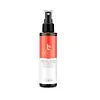What's inside
What's inside
 Key Ingredients
Key Ingredients

 Benefits
Benefits

 Concerns
Concerns

 Ingredients Side-by-side
Ingredients Side-by-side

Water
Skin ConditioningCitrus Grandis Fruit Extract
AstringentGlycerin
HumectantAloe Barbadensis Leaf Juice
Skin ConditioningAscorbic Acid
AntioxidantPolysorbate 20
EmulsifyingCitrus Aurantifolia Fruit Extract
Skin ConditioningCitrus Aurantium Amara Fruit Extract
Skin ConditioningMentha Arvensis Extract
MaskingSodium Hyaluronate
HumectantFerulic Acid
AntimicrobialCamellia Sinensis Leaf Extract
AntimicrobialCaffeine
Skin ConditioningSodium Citrate
BufferingPhenoxyethanol
PreservativeEthylhexylglycerin
Skin ConditioningTocopherol
AntioxidantParfum
MaskingDisodium EDTA
Sodium Hydroxide
BufferingPotassium Sorbate
PreservativeWater, Citrus Grandis Fruit Extract, Glycerin, Aloe Barbadensis Leaf Juice, Ascorbic Acid, Polysorbate 20, Citrus Aurantifolia Fruit Extract, Citrus Aurantium Amara Fruit Extract, Mentha Arvensis Extract, Sodium Hyaluronate, Ferulic Acid, Camellia Sinensis Leaf Extract, Caffeine, Sodium Citrate, Phenoxyethanol, Ethylhexylglycerin, Tocopherol, Parfum, Disodium EDTA, Sodium Hydroxide, Potassium Sorbate
Aloe Barbadensis Leaf Juice
Skin ConditioningGlycerin
HumectantSodium Ascorbyl Phosphate
AntioxidantSodium Hyaluronate
HumectantLeuconostoc/Radish Root Ferment Filtrate
AntimicrobialMalus Domestica Fruit Cell Culture Extract
Skin ConditioningFerulic Acid
AntimicrobialHamamelis Virginiana Extract
AntiseborrhoeicCamellia Sinensis Flower Extract
PerfumingCamellia Sinensis Leaf Extract
AntimicrobialCalendula Officinalis Flower Extract
MaskingSalix Alba Bark Extract
AstringentThioctic Acid
AntioxidantUbiquinone
AntioxidantOleic Acid
EmollientLecithin
EmollientXanthan Gum
EmulsifyingSodium Citrate
BufferingCitrus Sinensis Peel Oil Expressed
PerfumingAloe Barbadensis Leaf Juice, Glycerin, Sodium Ascorbyl Phosphate, Sodium Hyaluronate, Leuconostoc/Radish Root Ferment Filtrate, Malus Domestica Fruit Cell Culture Extract, Ferulic Acid, Hamamelis Virginiana Extract, Camellia Sinensis Flower Extract, Camellia Sinensis Leaf Extract, Calendula Officinalis Flower Extract, Salix Alba Bark Extract, Thioctic Acid, Ubiquinone, Oleic Acid, Lecithin, Xanthan Gum, Sodium Citrate, Citrus Sinensis Peel Oil Expressed
Ingredients Explained
These ingredients are found in both products.
Ingredients higher up in an ingredient list are typically present in a larger amount.
Aloe Barbadensis Leaf Juice comes from leaves of the aloe plant. Aloe Barbadensis Leaf Juice is best known for helping to soothe sunburns. It is also anti-inflammatory, moisturizing, antiseptic, and can help heal wounds.
Aloe is packed with good stuff including Vitamins A, C, and E. These vitamins are antioxidants, which help fight free-radicals and the damage they may cause. Free-radicals are molecules that may damage your skin cells, such as pollution.
Aloe Barbadensis Leaf Juice also contains sugars. These sugars come in the form of monosaccharides and polysaccharides, folic acid, and choline. These sugars are able to help bind moisture to skin.
It also contains minerals such as calcium, 12 anthraquinones, fatty acids, amino acids, and Vitamin B12.
Learn more about Aloe Barbadensis Leaf JuiceCamellia Sinensis Leaf Extract is derived from the leaves of the tea plant. Black tea, green tea, and oolong tea are all harvested from this plant.
This ingredient has many skin benefits:
This ingredient contains polyphenols, a strong antioxidant. Antioxidants help fight off molecules that damage skin cells.
On top of that, the antioxidants in green tea neutralize free-radicals from the sun. This gives the skin some extra UV protection, but should not replace sunscreen.
Many components of tea have anti-inflammatory properties.
Polyphenols and L-theanine help soothe the skin and reduce irritation. The caffeine in Camellia Sinensis Leaf Extract helps calm inflamed blood vessels.
Other compounds found in tea include: Vitamin Bs, linoleic acid, magnesium, calcium, iron, and zinc.
Research has shown both drinking Camellia Sinensis Leaf Tea and applying it to the skin can help boost skin elasticity and hydration. Studies also show using tea extract may reduce sebum, or oil, production.
Learn more about Camellia Sinensis Leaf ExtractFerulic Acid is a plant based antioxidant. By fighting free-radicals, ferulic acid can help reduce the formation of fine lines and hyperpigmentation.
When used with Vitamin C, Ferulic Acid has shown to prevent Vitamin C from breaking down. In other words, it acts as a stabilizer.
Ferulic Acid is sometimes used to preserve food. Foods containing Ferulic Acid include: oats, rice, eggplant, citrus.
In medicine, Ferulic Acid is being studied for helping with diabetes, Alzheimer's, and cardiovascular diseases.
Learn more about Ferulic AcidGlycerin is already naturally found in your skin. It helps moisturize and protect your skin.
A study from 2016 found glycerin to be more effective as a humectant than AHAs and hyaluronic acid.
As a humectant, it helps the skin stay hydrated by pulling moisture to your skin. The low molecular weight of glycerin allows it to pull moisture into the deeper layers of your skin.
Hydrated skin improves your skin barrier; Your skin barrier helps protect against irritants and bacteria.
Glycerin has also been found to have antimicrobial and antiviral properties. Due to these properties, glycerin is often used in wound and burn treatments.
In cosmetics, glycerin is usually derived from plants such as soybean or palm. However, it can also be sourced from animals, such as tallow or animal fat.
This ingredient is organic, colorless, odorless, and non-toxic.
Glycerin is the name for this ingredient in American English. British English uses Glycerol/Glycerine.
Learn more about GlycerinSodium Citrate is the sodium salts of citric acid. In skincare, it is used to alter pH levels and acts as a preservative.
Its main functions are to maintain the pH of a product and neutralize metal ions.
The acidity of our skin is maintained by our glands and skin biome; normal pH level of skin is slightly acidic (~4.75-5.5).
Being slightly acidic allows our skin to create an "acid mantle". This acid mantle is a thin barrier that protects our skin from bacteria and contaminants.
Learn more about Sodium CitrateSodium Hyaluronate is hyaluronic acid's salt form. It is commonly derived from the sodium salt of hyaluronic acid.
Like hyaluronic acid, it is great at holding water and acts as a humectant. This makes it a great skin hydrating ingredient.
Sodium Hyaluronate is naturally occurring in our bodies and is mostly found in eye fluid and joints.
These are some other common types of Hyaluronic Acid:
Learn more about Sodium Hyaluronate